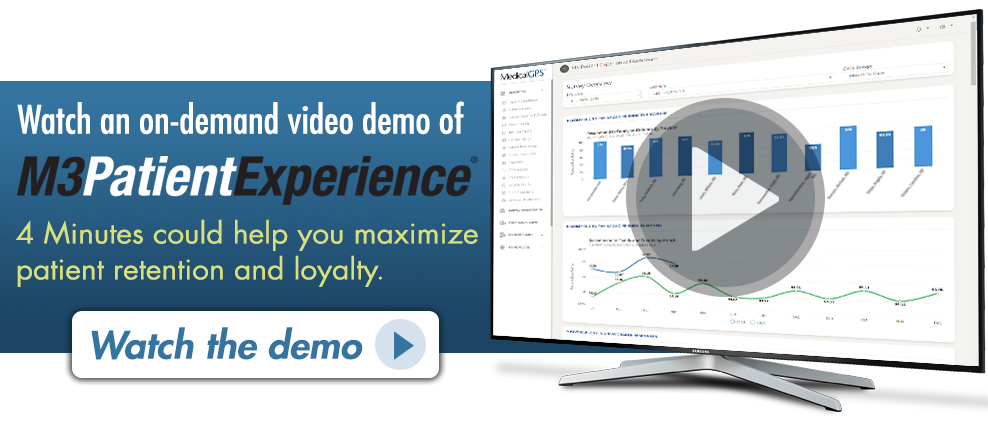 From the exam room to the home, technology is transforming every facet of healthcare at a pace that’s both exciting and overwhelming. Artificial intelligence systems can accurately create predictive outcome models or design smarter medicine, and remote health technology keeps patients more connected to providers than ever before, despite physically being miles apart. Electronic Medical Records (EMRs) have evolved to be more data-driven, personal, portable, and useful to both patients and providers. Activity monitors, fitness trackers, and personal health sensors empower patients to be better-informed advocates for their own care. Now more than ever, technology is helping patients and providers access medical data quickly and efficiently to enable informed decision-making while improving quality, outcomes, cost-effectiveness, and patient experience. (1) We may not have Star-Trek’s hand-held bone or dermal regeneration tech, but with healthcare technology advancing at its current rate, we can’t be far from it.
From the exam room to the home, technology is transforming every facet of healthcare at a pace that’s both exciting and overwhelming. Artificial intelligence systems can accurately create predictive outcome models or design smarter medicine, and remote health technology keeps patients more connected to providers than ever before, despite physically being miles apart. Electronic Medical Records (EMRs) have evolved to be more data-driven, personal, portable, and useful to both patients and providers. Activity monitors, fitness trackers, and personal health sensors empower patients to be better-informed advocates for their own care. Now more than ever, technology is helping patients and providers access medical data quickly and efficiently to enable informed decision-making while improving quality, outcomes, cost-effectiveness, and patient experience. (1) We may not have Star-Trek’s hand-held bone or dermal regeneration tech, but with healthcare technology advancing at its current rate, we can’t be far from it.
 The significance health technology has had on patient care is evident, but what is noteworthy is the impact it is having on patient engagement. Results from Deloitte’s 2020 Survey of US Health Care Consumers (2) confirm patient engagement is increasing through the use of technology. According to the survey, consumers increasingly trust personal health-monitoring technology and are more willing to share results with their provider. Nearly half of US consumers said they used tools to measure fitness and track health-improvement goals. There has also been a significant increase in the use of social media, patient portals, and performance scorecards (performance data for doctors, hospitals, and health plans). More healthcare organizations are implementing e-prescribing, telehealth, and online appointment scheduling. Patients are naturally becoming more engaged in their care as access to new health technology has increased. In fact, the percentage of consumers using virtual visits nearly doubled from 15% in 2019 to 28% in 2020.
The significance health technology has had on patient care is evident, but what is noteworthy is the impact it is having on patient engagement. Results from Deloitte’s 2020 Survey of US Health Care Consumers (2) confirm patient engagement is increasing through the use of technology. According to the survey, consumers increasingly trust personal health-monitoring technology and are more willing to share results with their provider. Nearly half of US consumers said they used tools to measure fitness and track health-improvement goals. There has also been a significant increase in the use of social media, patient portals, and performance scorecards (performance data for doctors, hospitals, and health plans). More healthcare organizations are implementing e-prescribing, telehealth, and online appointment scheduling. Patients are naturally becoming more engaged in their care as access to new health technology has increased. In fact, the percentage of consumers using virtual visits nearly doubled from 15% in 2019 to 28% in 2020.
 What is most relevant about these growing numbers is their correlation to improved patient satisfaction and engagement. The vast majority (80%) of patients who experienced a virtual-care visit would choose to have another. Younger people (Gen Z, 86%, and millennials, 83%) and those with a chronic disease (88%) led the results. It’s not a stretch to conclude that these virtual patients were pleased with their visit and care outcome. While telehealth is still in its infancy, consumers and providers are continuously identifying gaps and pushing for improvements that will shape tomorrow’s virtual healthcare.
What is most relevant about these growing numbers is their correlation to improved patient satisfaction and engagement. The vast majority (80%) of patients who experienced a virtual-care visit would choose to have another. Younger people (Gen Z, 86%, and millennials, 83%) and those with a chronic disease (88%) led the results. It’s not a stretch to conclude that these virtual patients were pleased with their visit and care outcome. While telehealth is still in its infancy, consumers and providers are continuously identifying gaps and pushing for improvements that will shape tomorrow’s virtual healthcare.
 Healthcare-centric artificial intelligence (AI) is also having a massive impact on improved patient care and experience. Machine learning has been shown to reduce costs by decreasing expensive MRI scan times (3), and AI helps guide clinical decision-making through predictive analysis derived from multiple conditions, variables, and possible outcomes. Sepsis Watch, a machine-learning program developed by the Duke Institute for Health Innovation, analyzes tens of thousands of data points to detect sepsis in a patient far earlier than was clinically possible before. While outcome data is still being collected, early models have shown that Sepsis Watch can predict sepsis 5 hours before a human can detect it. With such a high morbidity rate in septic patients, countless lives are being saved through just one use of care-based artificial intelligence.
Healthcare-centric artificial intelligence (AI) is also having a massive impact on improved patient care and experience. Machine learning has been shown to reduce costs by decreasing expensive MRI scan times (3), and AI helps guide clinical decision-making through predictive analysis derived from multiple conditions, variables, and possible outcomes. Sepsis Watch, a machine-learning program developed by the Duke Institute for Health Innovation, analyzes tens of thousands of data points to detect sepsis in a patient far earlier than was clinically possible before. While outcome data is still being collected, early models have shown that Sepsis Watch can predict sepsis 5 hours before a human can detect it. With such a high morbidity rate in septic patients, countless lives are being saved through just one use of care-based artificial intelligence.
 Growing evidence demonstrates the role technology has on improving patient engagement, quality, and outcomes. Most healthcare organizations have not only taken notice and they have taken action. The CDC reports that more than 89% of office-based physicians had implemented inpatient or ambulatory EHR systems.(4) The use of patient engagement EHR functionalities has also increased, as more healthcare institutions are adapting to the consumer-driven marketplace. Although the shift was seemingly inevitable, a combined result of government regulation and consumer demand. It looks as though the industry has acknowledged, accepted, and implemented these changes with the exception of a few outliers.
Growing evidence demonstrates the role technology has on improving patient engagement, quality, and outcomes. Most healthcare organizations have not only taken notice and they have taken action. The CDC reports that more than 89% of office-based physicians had implemented inpatient or ambulatory EHR systems.(4) The use of patient engagement EHR functionalities has also increased, as more healthcare institutions are adapting to the consumer-driven marketplace. Although the shift was seemingly inevitable, a combined result of government regulation and consumer demand. It looks as though the industry has acknowledged, accepted, and implemented these changes with the exception of a few outliers.
Healthcare organizations and providers must be open to adopting new technologies for patients to benefit from them, and the majority of those decisions are made based on their cost-effectiveness and efficacy. As the evolution proceeds toward a fee-for-service payment system to a value-based model consumers can expect to see a continued focus on patient engagement.
Moving forward, the healthcare institutions that focus their efforts on providing quality care and creating a superior patient experience through the use of health technologies will remain competitive. Technology will continue to be a driving force for increasing patient engagement and improving outcomes. Even more so in the future, than ever before.
Please let us know if you have comments or questions, and subscribe to our Email Updates so that you can be assured to receive Thinking Thursdays TIPs.
Thank you!
Jerry
Jerry L. Stone
Co-Founder/COO
MedicalGPS, LLC
1. https://medicalfuturist.com/ten-ways-technology-changing-healthcare/
2. https://www2.deloitte.com/us/en/insights/industry/health-care/consumer-health-trends.html
3. https://healthtechmagazine.net/article/2020/01/how-ai-improves-patient-experience-outcomes
4. https://www.cdc.gov/nchs/fastats/electronic-medical-records.htm


